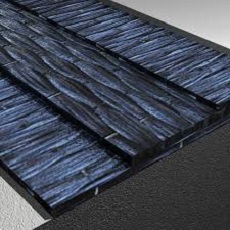
Fiberglass reinforced products offer several crucial benefits for many projects. They’re strong yet lightweight, and they can be used for even medical and marine projects. They have insulating properties, resistant to corrosion and other chemicals, and have a high impact tolerance.
But how do you go about buying the right type of fiberglass reinforced products? To help you out, here’s a simple guideline you can consult:
Pick the Right Manufacturer
You have plenty of options when it comes to choosing the FRP manufacturer you’ll get your items from. The right manufacturer should be the following:
- They should have a long history, meaning they have the necessary experience in dealing with FRP. In addition, a thriving FRP manufacturer, even after decades in the industry, means that they’ve been able to satisfy the needs of their customers through the years. They’ve managed to build a great reputation, and that should be due to excellent service and products.
- They offer a wide variety of FRP options. It’s much more convenient if you can just get all your needed FRP products from a single source. What’s more, you can be sure that these products work with one another seamlessly.
- They continue to innovate and work with plenty of current projects around the world. A long history is fine, but they should be respected enough that even now they’re still popular and their services are highly sought after.
The right manufacturer can help you determine what kind of materials you need to help you complete your projects quickly and properly.
Home Applications
Some FRP products are designed to reinforce the home. This means you can have fiberglass strengthening your house, as you can use FRP roofs, sidewalls, liners, corrugated panels, and wall and ceiling panels. Consult with your builder first before you insist on using FRP for your home.
Other uses for FRP materials include its use for tanks, pipes, ladders, enclosures, and doors. There are even FRP chimneys and ducts.
Conduits: Above Ground and Below Ground
Above ground applications include transit, power, and telecommunications utilities requiring FRP conduits. Below ground conduits are for encased burial or direct burial applications, when the systems are obviously installed below the ground. You need to consult the manufacturer to make sure that their products meet your special requirements.
Mechanical Requirements
FRP products can come with different strength levels. The strongest FRPs may be used for utilities and airports that can withstand various low velocity projectiles, including small caliber fire. These products can offer amazing durability features, which means that they won’t require frequent maintenance and they can last for many years before requiring replacement.
Resistance to Various Environmental Conditions
Some FRP products can offer especially high resistance to various hazards in the environment. These can include corrosion, smoke, flames, high temperatures, and toxins.
In other words, some of these FRP products can withstand fires and other high temperature conditions, though of course they will be more expensive due to their special features.
Cost
Any responsible buyer will have to consider the cost of the FRP and compute its relative value to the project. It’s true that FRPs can be comparatively expensive. But they can speed up the construction process so that in the end they can actually save money in the long run. That’s especially true when they’re durable and don’t need extensive maintenance.
Conclusion
In the end, picking the FRP you need depends on your project, your budget, and your special needs. The features you obtain from the FRP must meet your requirements, and also meet various local building codes. With the right manufacturer, your FRP can help you build a superior product while your project goes by faster.






